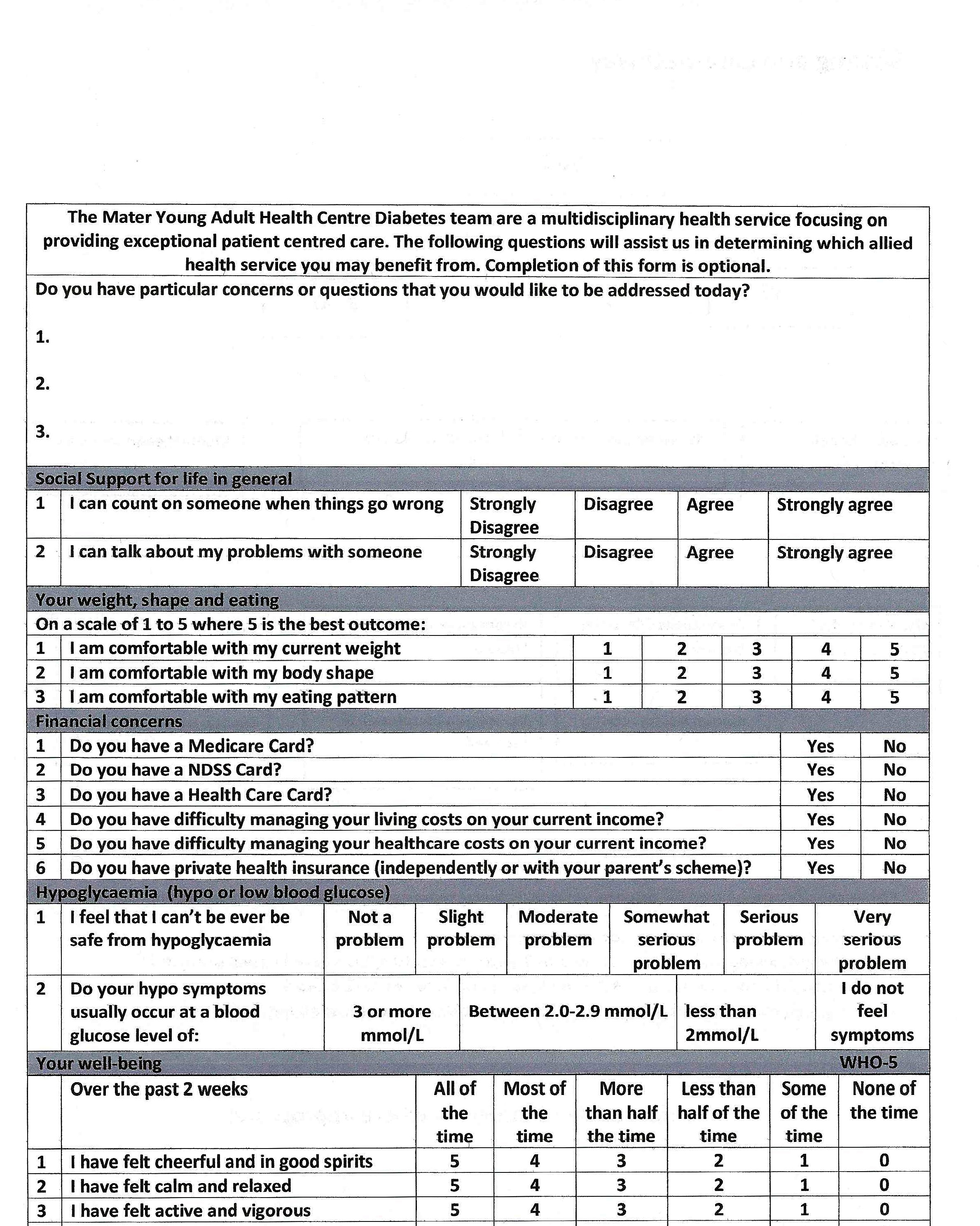Poster Presentation Australian Diabetes Society and the Australian Diabetes Educators Association Annual Scientific Meeting 2016
A proposed model of care: Identification of variable and suitable measures for routine data collection along with care-pathways and psychosocial interventions to optimise emotional well–being and glycaemic control of young people aged 18-25 years with type 1 diabetes (#359)
Aims: To identify suitable measures for a routine psychosocial screening protocol and outline care-pathways and psychosocial interventions to optimise treatment emotional well–being and glycaemic control of young people with type 1 diabetes aged 18-25 years.
Methods: Results of a study which assessed demographics, psychosocial variables, general health, and disease-specific indicators in young adults with diabetes were considered along with team consensus and current evidence of treatment strategies for diabetes distress, comorbid mental health problems and for optimising glycaemic control. Diabetes clinicians (endocrinologists, dietitian, diabetes nurse educators, psychologist) and mental health clinicians (psychiatrist, mental health nurse, psychologist) worked collaboratively to identify a subset of measures suitable to use in routine screening and to develop the care pathways.
Results: Figure 1 illustrates the diabetes psychosocial screening tool developed. This brief comprehensive tool encompasses three validated measures, the Problem Areas in Diabetes (PAID), the Kessler 10 (K10) and the World Health Organisation Quality of Life tool (WHO-5). Additional questions were added to assess for hypo-unawareness, fear of hypo, social support, weight, shape and eating concerns and financial concerns. The screening tool will be implemented prior to their consultation at the routine clinic in a staged process on an annual basis.
Figure 2 outlines the care pathways developed and interventions to be used. Results of the screening tool will be addressed with the young adult at their clinic visit, and they can elect to engage in the management plan.
Conclusion: A psychosocial screening tool and associated care-pathways were developed for routine use in a young adult tertiary referral diabetes clinic. Results of screening along will be collated along with basic demographic and clinical data providing a longitudinal data source for further research to inform clinical practice.
Figure 1:

Figure 2:
